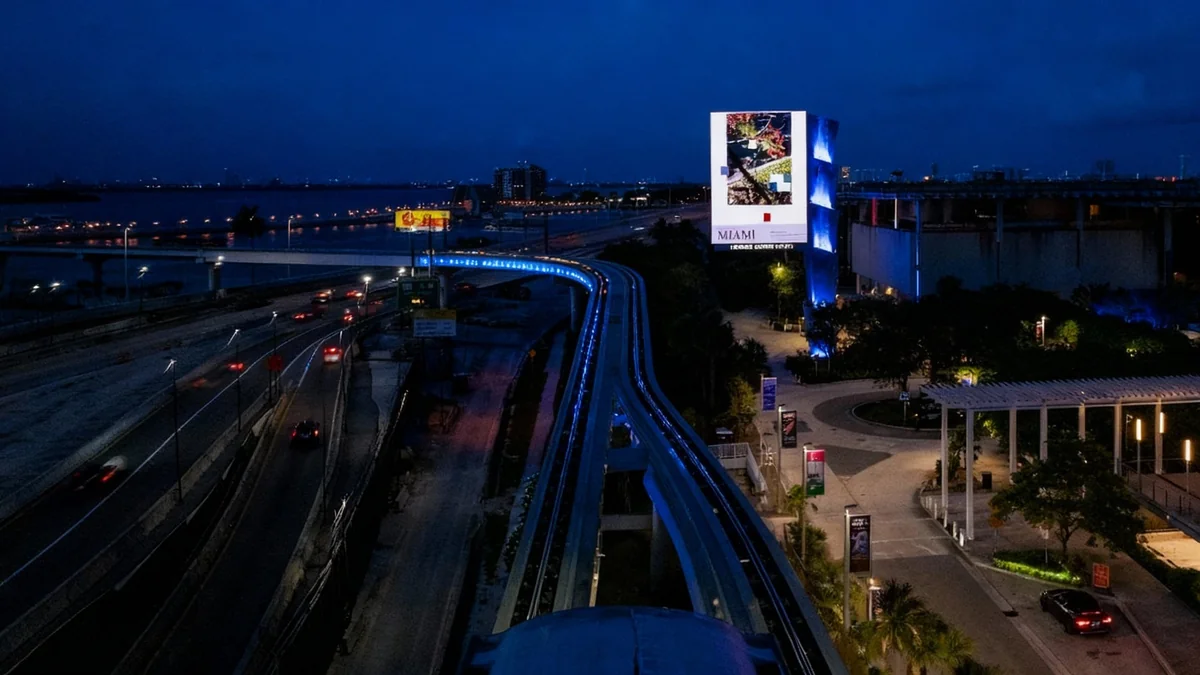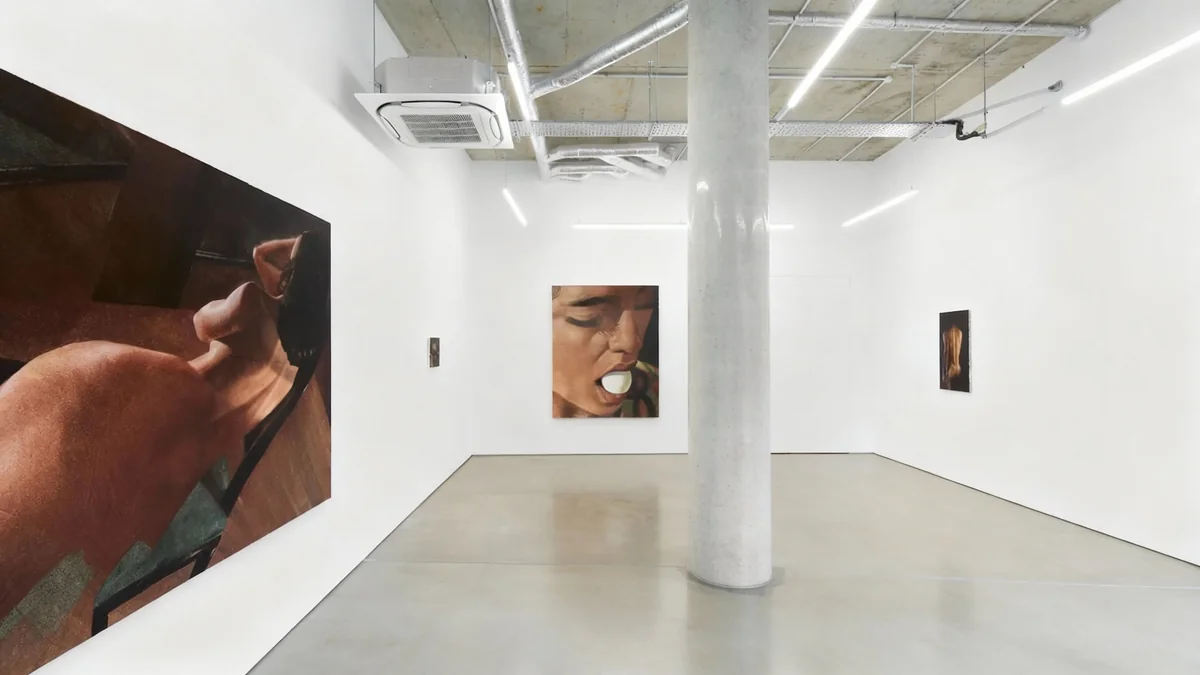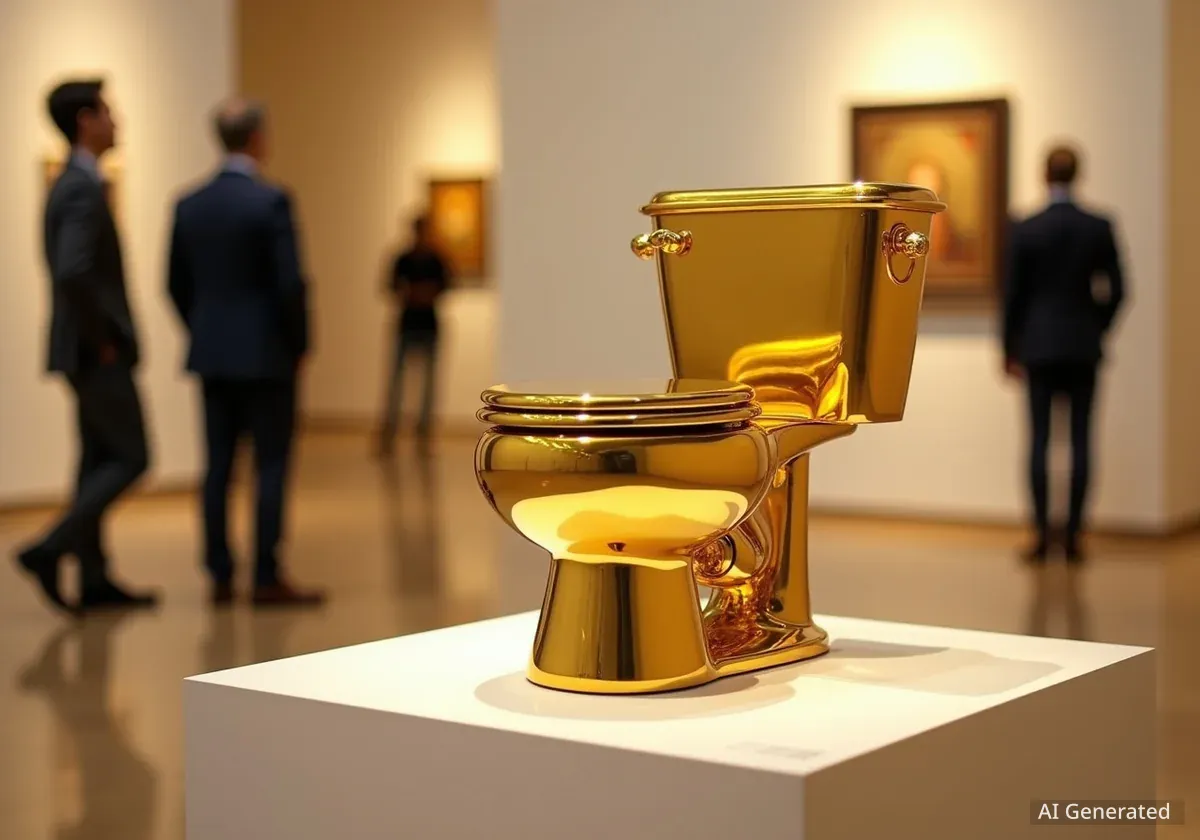A prominent digital billboard at the Pérez Art Museum Miami (PAMM) is now the subject of a new lawsuit. Miami's Frost Museum of Science filed the suit against the Florida Department of Transportation (FDOT) last Wednesday, seeking the billboard's removal. The Frost Museum argues the 1,800-square-foot sign violates state law by being too large and advertising products unrelated to PAMM's core business.
This legal action reignites a long-standing controversy surrounding the massive display. The billboard, which promotes PAMM events alongside luxury brands like Tiffany and Yves Saint Laurent, has been a point of contention since its inception.
Key Takeaways
- Frost Museum of Science sued FDOT to remove PAMM's digital billboard.
- The lawsuit claims the billboard is too large and advertises unrelated luxury goods.
- State law generally limits billboards near highways to 950 square feet.
- A 2023 city exception allowed PAMM to build a larger sign, later overturned.
- PAMM previously settled with the city, agreeing to pay $500,000 annually.
The Billboard's Contentious History
The saga of the PAMM billboard began in 2023. Florida state law dictates that billboards near highways must not exceed 950 square feet. An exception exists for signs on a business's premises, provided they primarily advertise that business or its products, and the business does not earn rental income from the sign.
PAMM sits adjacent to the MacArthur Causeway, a crucial part of Florida's state highway system. This location places it directly under FDOT regulations.
Billboard Facts
- Size: 1,800 square feet
- Location: Pérez Art Museum Miami (PAMM)
- Advertises: PAMM programs, luxury goods (Tiffany, Yves Saint Laurent)
- Estimated Annual Earnings for PAMM: $1.5 million from ads
In 2023, the Miami City Commission granted a special exemption to PAMM and the Adrienne Arsht Center for the Performing Arts. This allowed them to install digital billboards nearly double the standard legal size. PAMM was the only organization to act on this exception.
Allegations of Influence and Overturned Decisions
A 2024 report highlighted concerns about the 2023 exemption. It revealed that then-commissioner Alex Díaz de la Portilla introduced the exception. The billboard's operator, Orange Barrel Media, had reportedly contributed $225,000 to Díaz de la Portilla's unsuccessful re-election campaign.
"Pérez Art Museum Miami’s sign was meticulously reviewed and approved by all relevant authorities, ensuring full compliance with state and local regulations."
To circumvent FDOT regulations regarding products advertised, PAMM installed a kiosk in its garage. This kiosk allowed visitors to purchase any goods displayed on the billboard. However, a 2024 FDOT letter to PAMM specified that these goods needed to be available for pickup at the museum itself, not just purchasable.
Regulatory Background
Florida state law aims to control billboard sizes and content, especially near state highways. The rules prevent oversized signs and ensure they primarily serve the business on whose property they stand. Income generation from third-party advertisements on such signs is also restricted.
Following strong neighborhood opposition, city commissioners overturned the exemption in 2024. Despite the billboard already being built, the city argued it was illegal. They claimed PAMM violated its ground lease by constructing the sign without city approval.
Previous Settlement and New Litigation
A court battle between PAMM and the City of Miami concluded last month. PAMM agreed to reduce the sign's operating hours and committed to paying the city at least $500,000 annually. PAMM's earnings from selling digital ads on the billboard are estimated at $1.5 million per year.
The current lawsuit, filed by the Frost Science Museum, shifts focus back to the FDOT regulations. Frost Science argues that the sign still exceeds state size limits. They also contend it advertises products unrelated to the museum's primary business and generates income for PAMM, all in violation of state law.
Frost Science's Concerns
Douglas Roberts, president and CEO of Frost Science, expressed strong opposition to the billboard. He stated that the advertisements negatively impact the museum's atmosphere.
"Frost Science opposes advertisements on this oversized sign because they degrade the environment of learning and curiosity that is central to the museum experience. The bright light source restrains use of Frost Science’s outside spaces, especially at night."
Roberts further emphasized that the sign's existence could jeopardize millions of dollars in federal highway funding for Florida. He reiterated his call for the billboard's removal, stating it was "illegal and should not have been built in the first place."
Impact on Miami's Cultural Landscape
This ongoing legal dispute highlights the tension between commercial interests and cultural institutions in Miami. Both PAMM and Frost Science are vital parts of the city's cultural offerings.
The outcome of this lawsuit could set a precedent for how cultural institutions in Florida can use their properties for commercial purposes. It also raises questions about the enforcement of state and local regulations concerning advertising and urban planning.
The bright digital display, visible from various points along the MacArthur Causeway, continues to draw attention. Its future now rests in the hands of the courts, as two prominent museums find themselves at odds over a giant sign.




